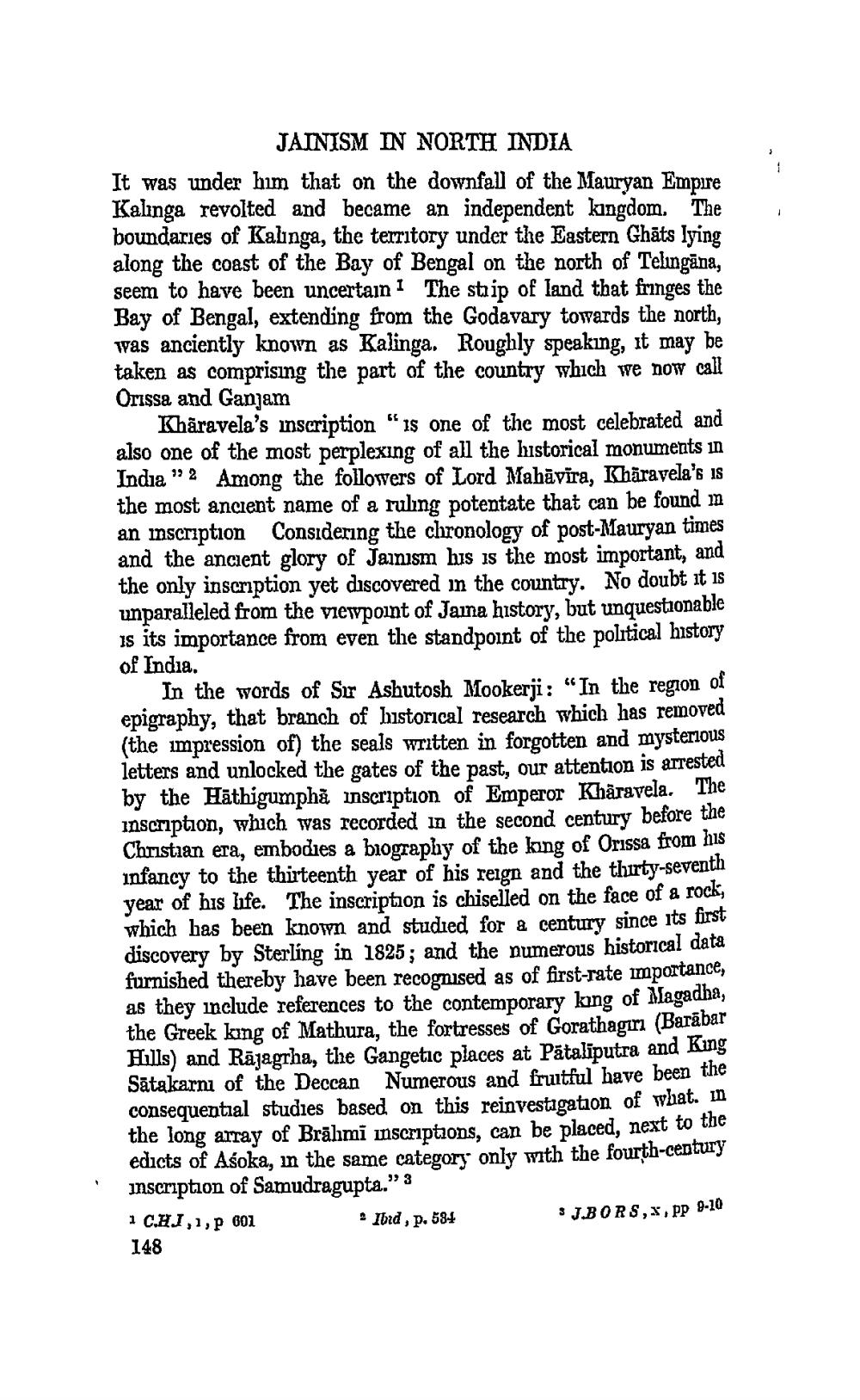________________ JAINISM IN NORTH INDIA It was under him that on the downfall of the Mauryan Empire Kalinga revolted and became an independent kingdom. The boundaries of Kalinga, the territory under the Eastern Ghats lying along the coast of the Bay of Bengal on the north of Telingana, seem to have been uncertain 1 The strip of land that fringes the Bay of Bengal, extending from the Godavary towards the north, was anciently known as Kalinga. Roughly speaking, it may be taken as comprising the part of the country which we now call Orissa and Ganjam Kharavela's inscription" is one of the most celebrated and also one of the most perplexing of all the historical monuments in India" 2 Among the followers of Lord Mahavira, Kharavela's is the most ancient name of a ruling potentate that can be found m an inscription Considering the chronology of post-Mauryan times and the ancient glory of Jainism his is the most important, and the only inscription yet discovered in the country. No doubt it is unparalleled from the vicwpoint of Jama history, but unquestionable is its importance from even the standpoint of the political history of India. In the words of Sir Ashutosh Mookerji: "In the region of epigraphy, that branch of historical research which has removed (the impression of) the seals written in forgotten and mysterious letters and unlocked the gates of the past, our attention is arrested by the Hathigumpha inscription of Emperor Kharavela. The inscription, which was recorded in the second century before the Christian era, embodies a biography of the king of Orissa from his infancy to the thirteenth year of his reign and the thirty-seventh year of his life. The inscription is chiselled on the face of & rock, which has been known and studied for a century since its first discovery by Sterling in 1825; and the numerous historical data furnished thereby have been recognised as of first-rate importance, as they include references to the contemporary king of Magadha, the Greek king of Mathura, the fortresses of Gorathagiri (Barabar Hills) and Rajagrha, the Gangetic places at Pataljputra and King Satakarni of the Deccan Numerous and frutful have been the consequential studies based on this reinvestigation of what. m the long array of Bralmi inscriptions, can be placed, next to the edicts of Asoka, in the same category only with the fourth-century inscription of Samudragupta." 1 C.HJ,,P 601 Iord , p. 58+ J.BORS, 3, pp 8-10 148




